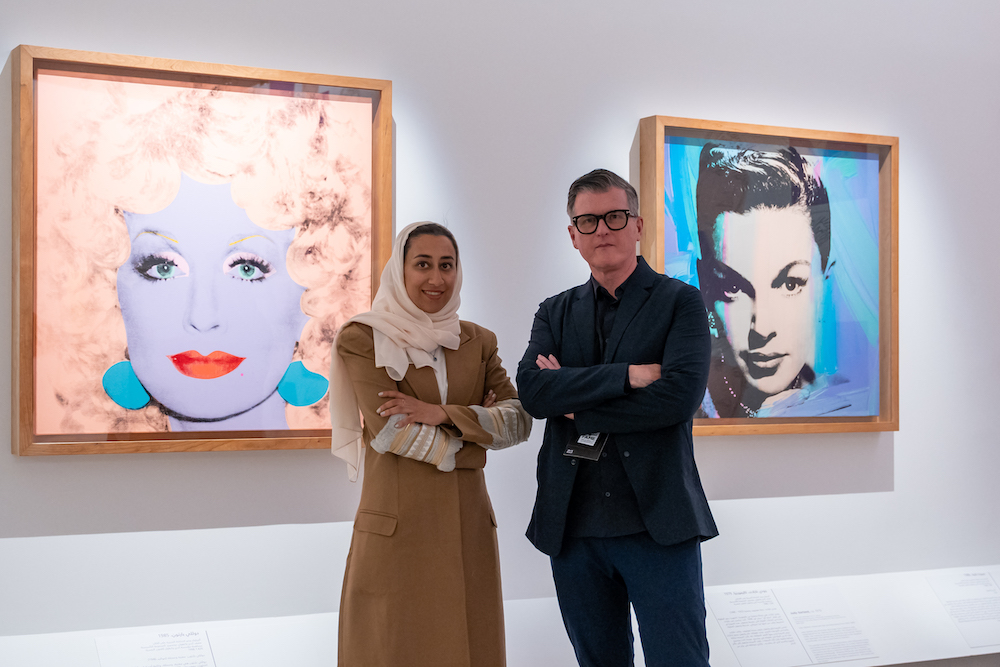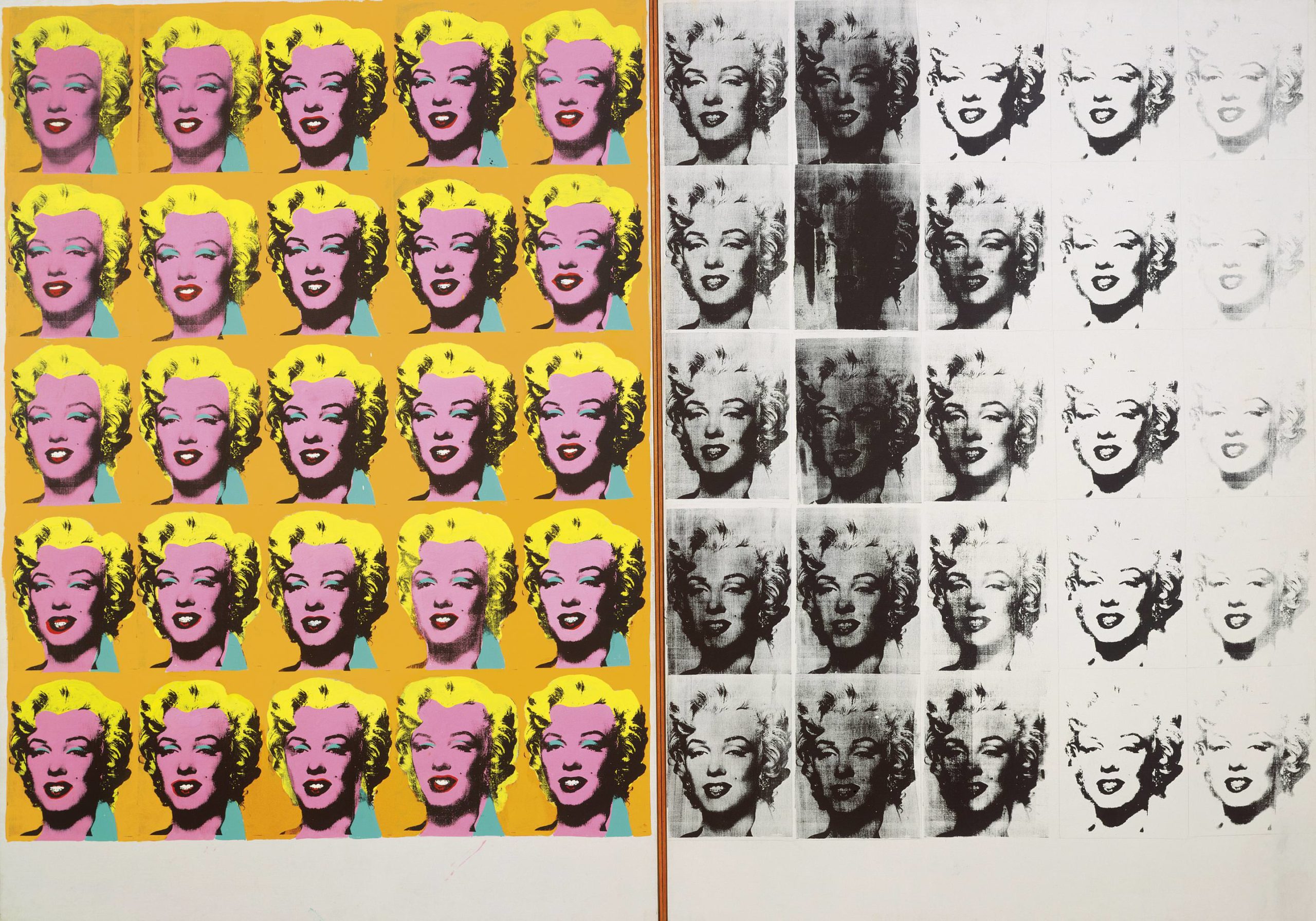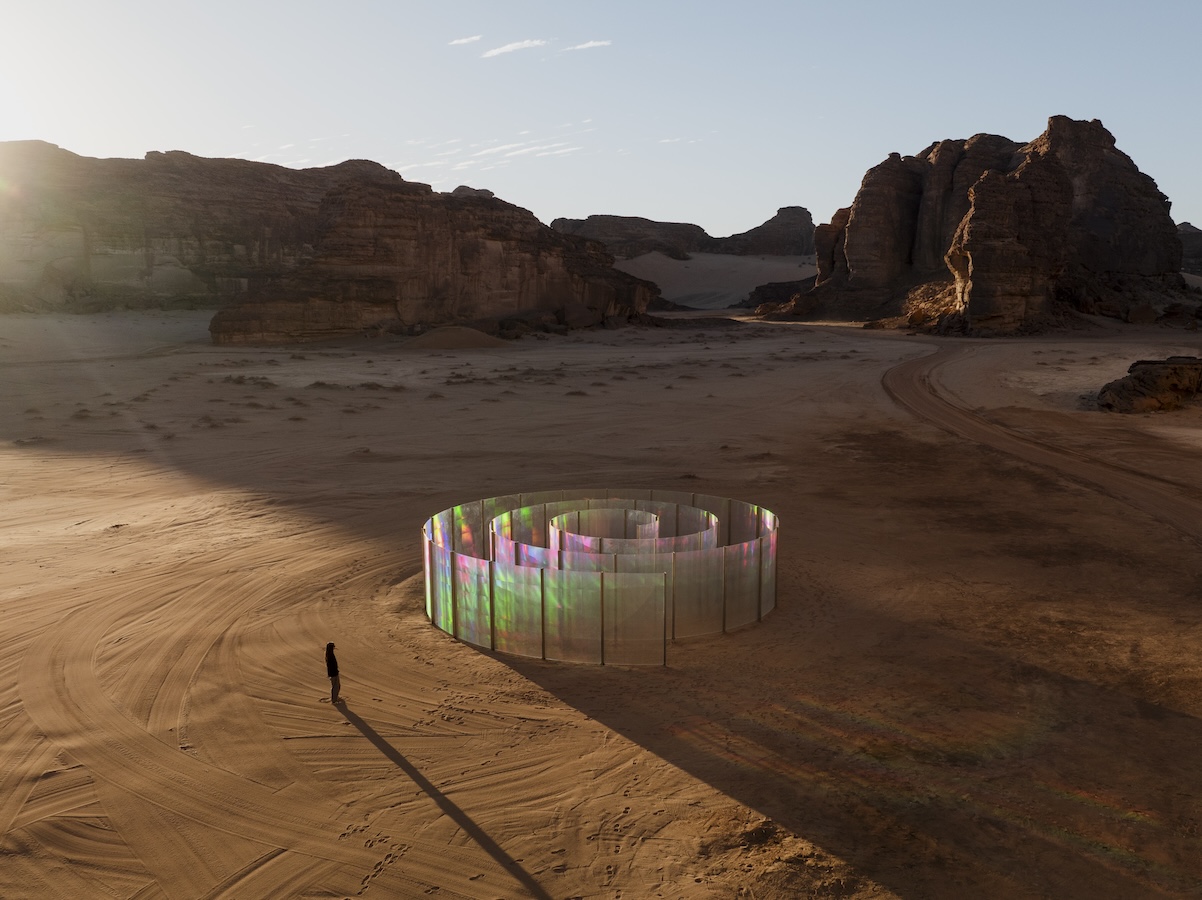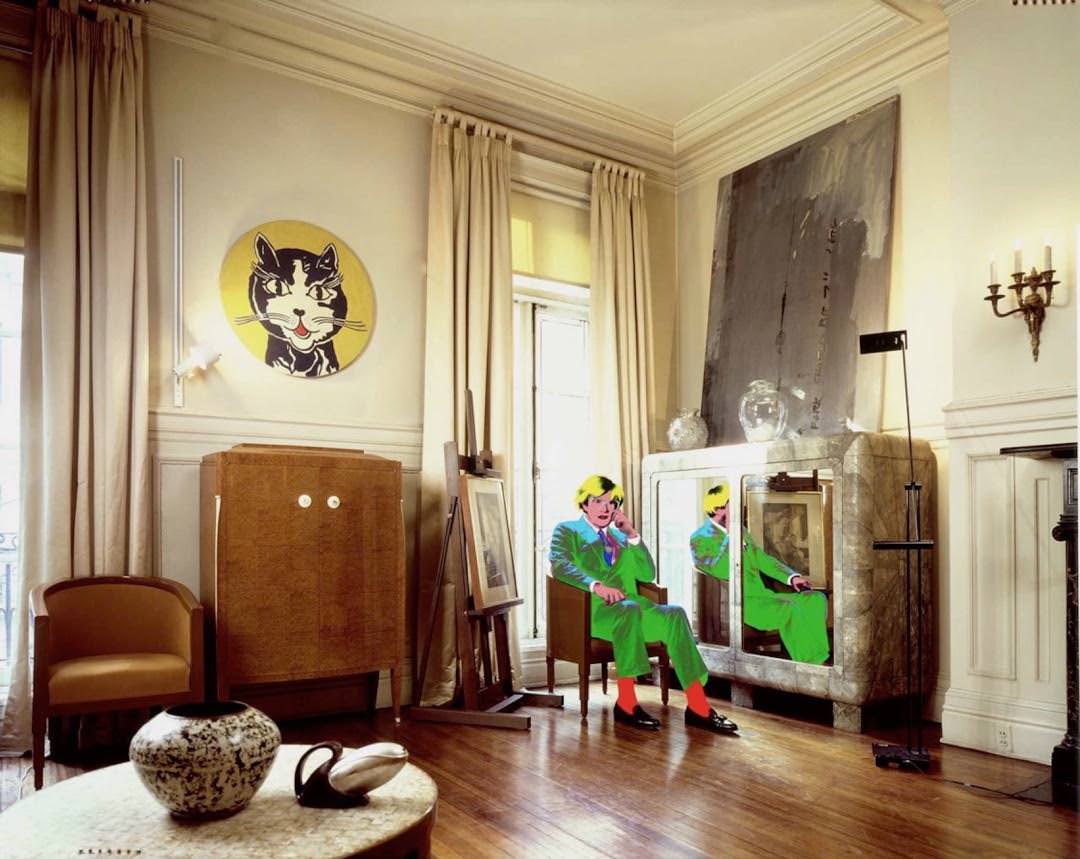Show of Andy Warhol in AlUla is a First for the Arts-Focused Region
“FAME: Andy Warhol in AlUla” was on view last spring at Maraya in Saudi Arabia. It marked the first time the American artist’s work was presented in the Arabian desert oasis, which is dedicated to engaging with contemporary artists through commissions that engage with the landscape, community, and greater region. Curated by Patrick Moore, director of The Andy Warhol Museum, “FAME” brought together a range of work by the iconic artist, including portraits of the likes of Elizabeth Taylor and Muhammad Ali, his “screen tests” films, and the floating installation of Silver Clouds.
The survey show not only introduces Warhol to new audiences and contexts, but brings the conversation about fame—a source of fascination and a subject for the artist—into the 21st century, addressing our current obsession with social media and sharing personal photographs, as well as the trappings of the pursuit of being seen.
“Cross-cultural dialogue is quite important. It was important to see Andy Warhol, an artist who really captured a lot of transformation during his time,” said Nora Aldabal, who is the arts and creative planning director at the Royal Commission of AlUla (RCU). “It’s important to see how that reflects and also speaks to what’s happening in the region.” Whitewall spoke with Moore about the allure and mirage-like in the desert—of fame.
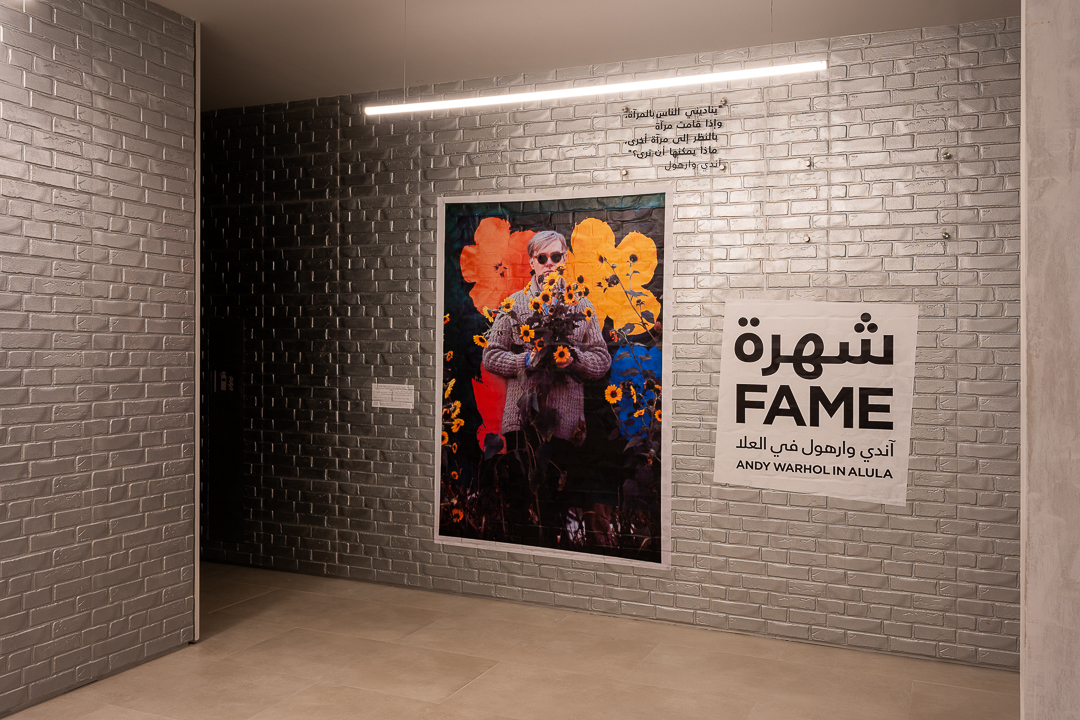
Installation Photo © Arts AlUla / © 2023 The Andy Warhol Foundation for the Visual Arts, Inc. / Licensed by DACS, London © KIWI Arts Group kiwiartsgroup.com.
Andy Warhol Was Famous for Exploring Fame
WHITEWALL: What was the starting point for “FAME”?
PATRICK MOORE: I was trying to think about the connection between this country full of young people, and Warhol’s work. When I came here in 2021, like everybody else I was amazed by what I found, the youth of the country. I saw people everywhere. It was all of that “Here I am, see me” idea. I thought, “Well, let’s do a show about celebrity and portraiture, because if people think about Warhol, that’s usually where they start. But it also will be well attuned to this idea of everybody being obsessed with social media.”
WW: Where do you see Warhol and his fascination with celebrity fitting within the context of the region? You started alluding to the idea of this young generation being seen on social media.
PM: This is obviously a rapidly evolving part of the world, where American culture, as it is everywhere, is a complicated subject, because America does have a very strong popular culture, but it also can be reductive in some ways. But that’s actually pretty well suited to Warhol, because Warhol probably would not be so upset that he’s become a brand.
I think that the idea of an artist who is so famous that he’s a brand is not a bad place to start with contemporary art, because likely he will have been of interest to young artists here and be known on some level to a lot of the younger people.

Silver Clouds – Installation Photo © Arts AlUla / © 2023 The Andy Warhol Foundation for the Visual Arts, Inc. / Licensed by DACS, London
Some of Andy Warhol’s Most Famous Works on View in AlUla
WW: How did you go about selecting the works that are on view?
PM: I wanted to try to pick people who were basically one name famous, because I thought that they would be most likely to be known to a Saudi audience. I know even with that, that not everybody will know who Debbie Harry is, but it was really meant to be a wide swath of primarily Americans. We have Princess Caroline included, too, but it’s a wide kind of swath of American culture during Warhol’s life.
WW: Do you feel there is an impact of the American culture of that time in today’s society in Saudi?
PM: You look at those screen tests, and there is just something undeniably cool about that era of American culture. It was also joyful. It was truly experimental. It was America at its best.
WW: Can you tell us about the setting and scenography of the exhibition?
PM: Long before I came here, I had seen pictures of this building, and I was just riveted by it—the idea of this giant mirrored building that disappears in the desert. The setting was less about the natural wonders of AlUla and more about the mirrored building that disappears into the desert. And the idea of mirrors and mirroring of society became the strongest connection.

Installation Photo © Arts AlUla / © 2023 The Andy Warhol Foundation for the Visual Arts, Inc./ Licensed by DACS, London
WW: How does the setting of the desert and its mirage allude to the illusion that comes with fame? Do you think fame is a mirage as well?
PM: I think fame is complicated and the desert is complicated, too. You know, the desert is harsh. It’s beautiful. It’s very hot at one point and then freezing at night.
And it’s the same with fame. Of course, Warhol never talked about any of that or made it explicit in the work. But if you look at the paintings of Elvis, for example, where he makes a mistake and the silkscreen double registers, it’s very easy to project onto a work like that, that fame makes people grotesque. Fame can distort people. And then the real point is that all of these people will be forgotten one day. If you and I become the most famous people in the world, one hundred years from now, there’s a good shot that nobody will know who we are. So there’s this wistful quality to fame and all material blessings.
I think for Warhol that is a through line—we’re here for a minute. And then it’s all gone. Hopefully, there’s something on the other side too, but that’s why I think Warhol was quite intentional, especially in the early portraits, of always picking the tragic star, never just the glamorous star.

Installation Photo © Arts AlUla / © The Andy Warhol Museum, Pittsburgh, PA, a museum of Carnegie Institute. All rights reserved. Film still courtesy The Andy Warhol Museum.
A First for Saudi Arabia
WW: Did Warhol have any relationship with the region during his career?
PM: Not with Saudi, but with the region. If you read Warhol’s diaries, he’s forever going to parties at the Iranian embassy. He made some trips to the area. I don’t know that it was a particularly deep connection. I think it was a little bit like France, actually. Certain very wealthy, very famous, very influential people were part of his world in New York, and that was the jet set era.
I felt Warhol had not been seen enough in this region. That was a very, very big consideration, that there are so few people and places in the world where Warhol has not really been shown, that that’s absolutely part of our mission, to show the work in those areas.
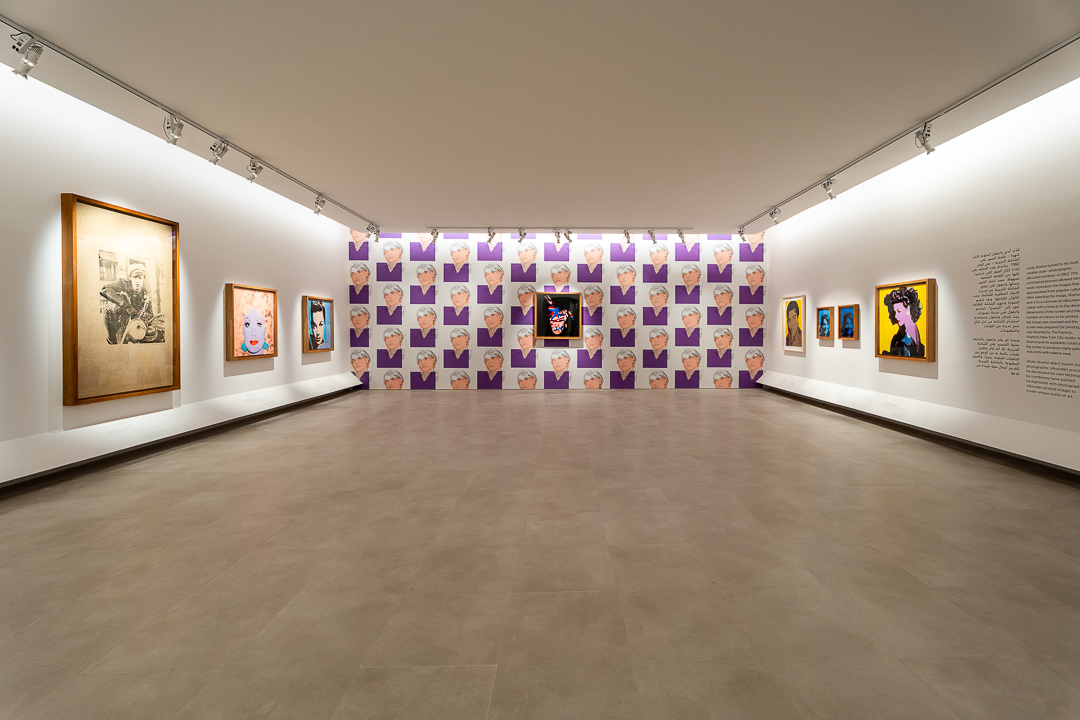
Installation Photo © Arts AlUla / © 2023 The Andy Warhol Foundation for the Visual Arts, Inc. / Licensed by DACS, London.



